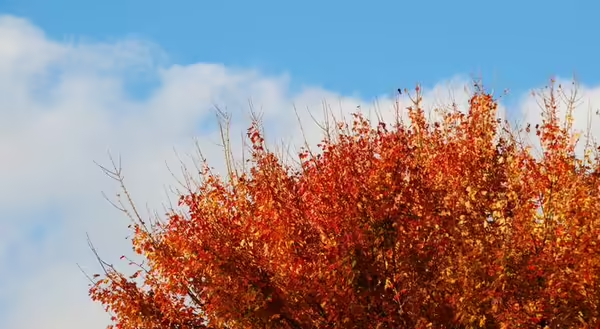
By Ella Maxwell, Extension Master Gardener serving Fulton, Mason, Peoria, and Tazewell counties
Fall is an excellent time to plant a tree. But what tree to plant? A flowering ornamental tree, evergreen tree, shade tree, native tree, fruit tree, or the "right" tree for you, your space, and your environment.
Find the right tree
These considerations need to be researched to find the "right" tree.
Most of us don't have unlimited yard space, so only one tree may be chosen. So, right tree, right place is important.
To begin your search, go out and enjoy trees in your neighborhood, parks, or botanic gardens. It's important to learn to identify different trees and decide why they were chosen or what limitations you are noticing. So many of us fail to consider overhead or underground utilities in our trees' placement. You can call 811 for a utility locate before you dig.
Also, research the tree's ultimate size and growth habit so you can provide optimal room for growth. As a rule for shade trees, they should be 20' apart and 20' from your foundation. Smaller ornamental trees can be planted closer if desired. Remember that as the tree grows, the shade it casts and its expanding root system will impact other plants and turf, so plan accordingly. Of course, you also have to consider the fall leaf drop. The leaves can be left, mulched, or composted.
Most trees, if planted correctly and cared for, will establish in almost any situation. Urban planners have developed bed designs and special soils to guarantee the success of street trees in harsh urban settings.
Proper planting guidelines
Trees fail in the first several years due to events that could have been prevented.
1. Plant at the correct depth with the root flare visible, reduce girdling roots by cutting or choosing trees grown in root control bags or pots, and watering as needed for establishment and continued growth.
2. Mulch correctly like a donut with the trunk exposed to ground level as opposed to a volcano with mulch piled against the trunk.
3. Trunks protected from deer rub, mower or weed whipper damage, boring insects, or sunscald.
4. Corrective pruning as the tree develops to remove crossing branches, mitigate co-dominate branching or V shape branch attachment in the lower canopy, and to raise the canopy of the tree.
Following proper planting guidelines usually yields success. There are so many tree species available in various sizes. Do your research, and you will be rewarded with a magnificent tree for your yard and garden and for the next generation.